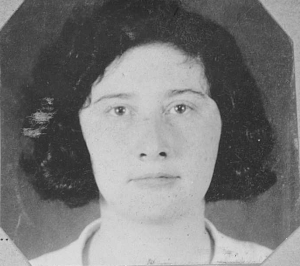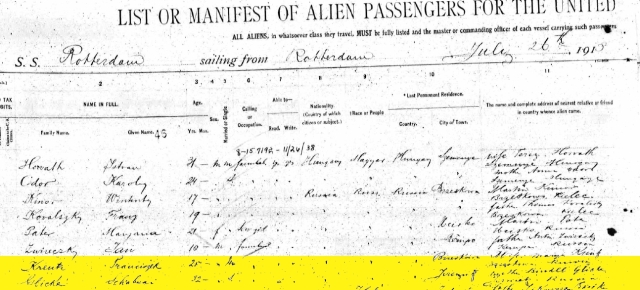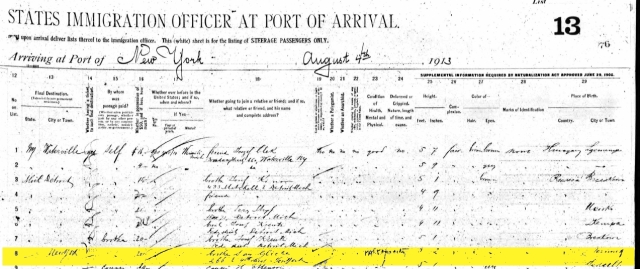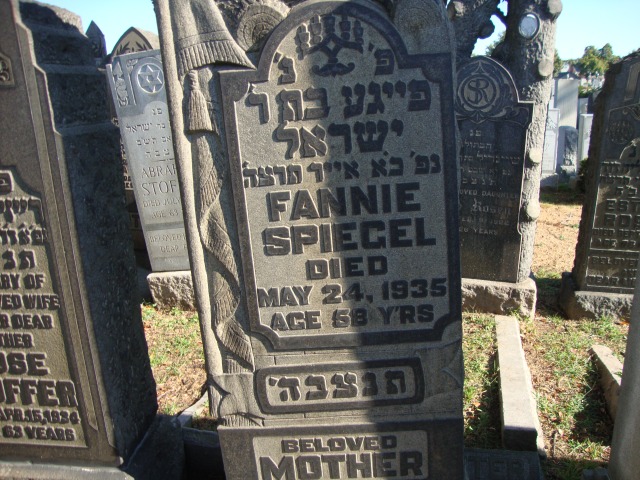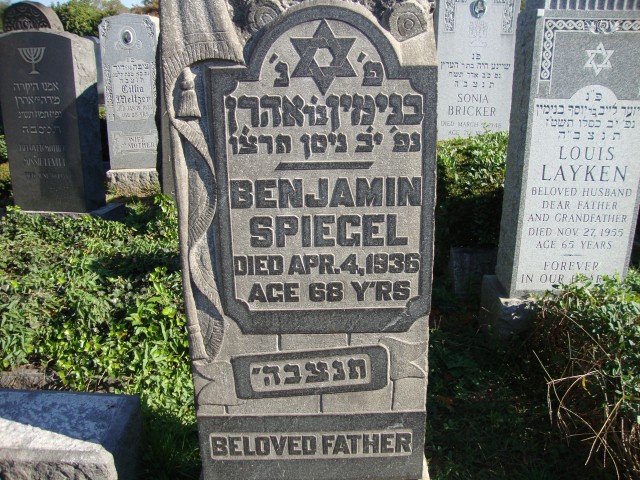I never guessed anyone would consider a post titled “Tombstone Tuesday” morbid and yet I’ve heard that comment. Sharing headstone photos of relatives is a natural extension of research and writing about family history. A headstone can be a treasure trove of clues for a genealogist: a birthdate and date of death, whether a spouse, parent, grandparent or great-grandparent.
In the case of Jewish genealogy, a matzevah [Hebrew word: headstone] can be even more valuable. It often shows the Hebrew and/or Yiddish name of the relative as well as their father’s Hebrew or Yiddish name. This information can lead to or confirm other family relationships. In the case of my aunt Clara Firester, her headstone shows her Hebrew name was “Chaya”, in memory of her great-grandmother Chaya Tuba Itzkowitz. This confirmed the name that was listed on the death certificate of Clara’s grandfather (and my great-grandfather) Charles “Chaskel” Itzkowitz for his mother.
I’m very fortunate to have the skills to read the Hebrew and Yiddish names inscribed on headstones. Not everyone does. Almost daily I see a posting on the group page of “Tracing the Tribe – Jewish Genealogy on Facebook” asking for a translation of the Hebrew or Yiddish name on a matzevah. My skills are minimal, though, since I only acquired my knowledge of the Hebrew alphabet as a young adult. With a desire to read Hebrew, I started by checking out a “Berlitz Learn Hebrew” book from the library and studying it during feedings for my younger son. Little did I know at the time that one day this knowledge would help with my chosen hobby.
My knowledge of Hebrew tells me more about Clara. Clara’s name, Chaya, is the feminine derivative of the Hebrew word for “Life”. It is a sad irony that Chaya was the name for Aunt Clara since she died so early in childhood at the age of 3.
Posting headstone photos is valuable for one other reason. Not everyone can visit a cemetery. Those descended from Kohanim (Hebrew word: men who are descended from the Biblical tribe of Aaron), are often unable to visit a cemetery for religious reasons. They might have no opportunity to view a matzevah in person. Even, their parent’s matzevah!
With families scattered far and wide, if may be years or never that a cemetery visit is possible. A digitized photo may be the only opportunity to view a headstone for some.
So I’ll continue posting headstone photos. I might consider a new title, though. Instead of “Tombstone Tuesday”, perhaps “Tuesday Treasure”?
